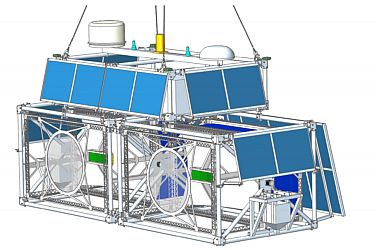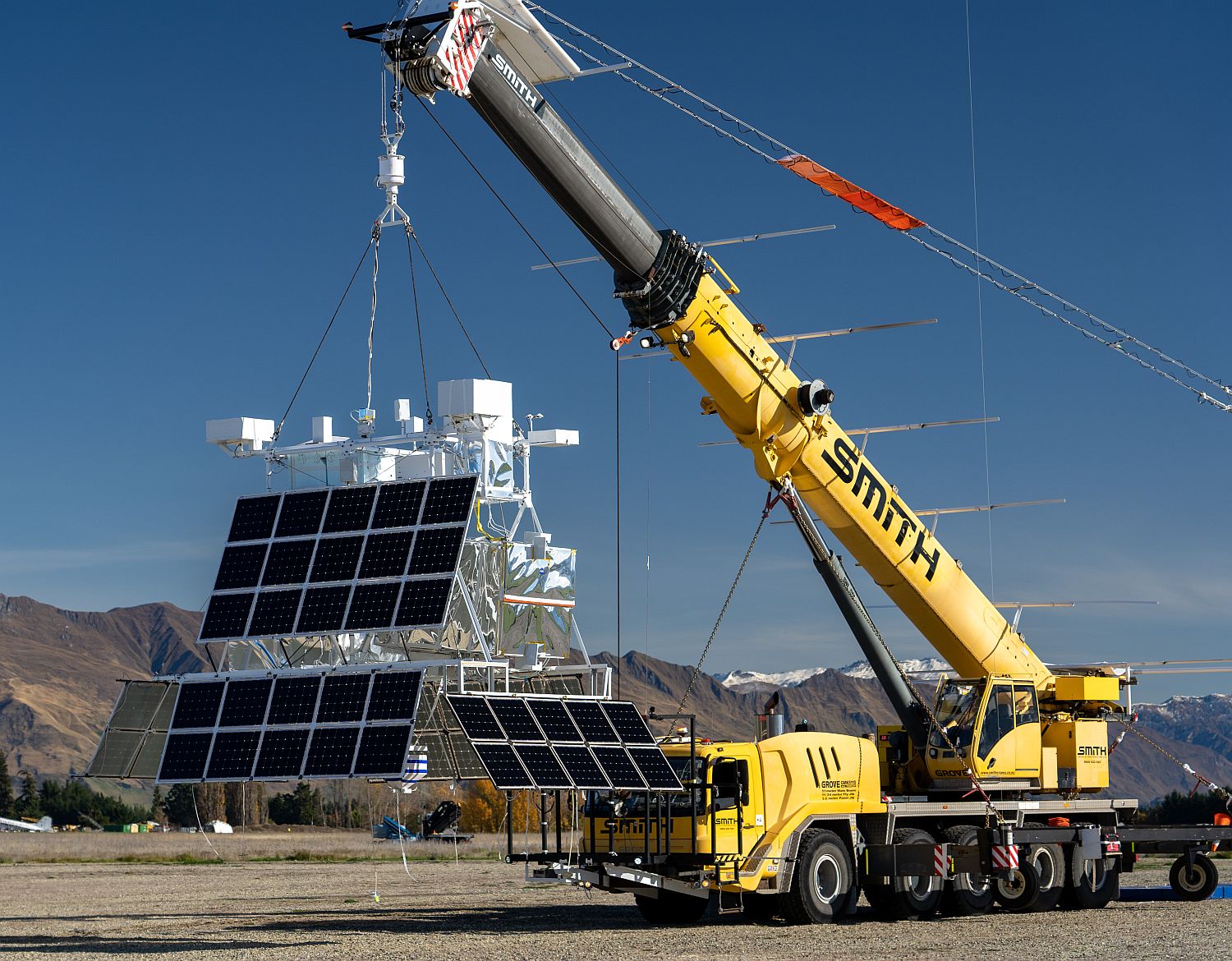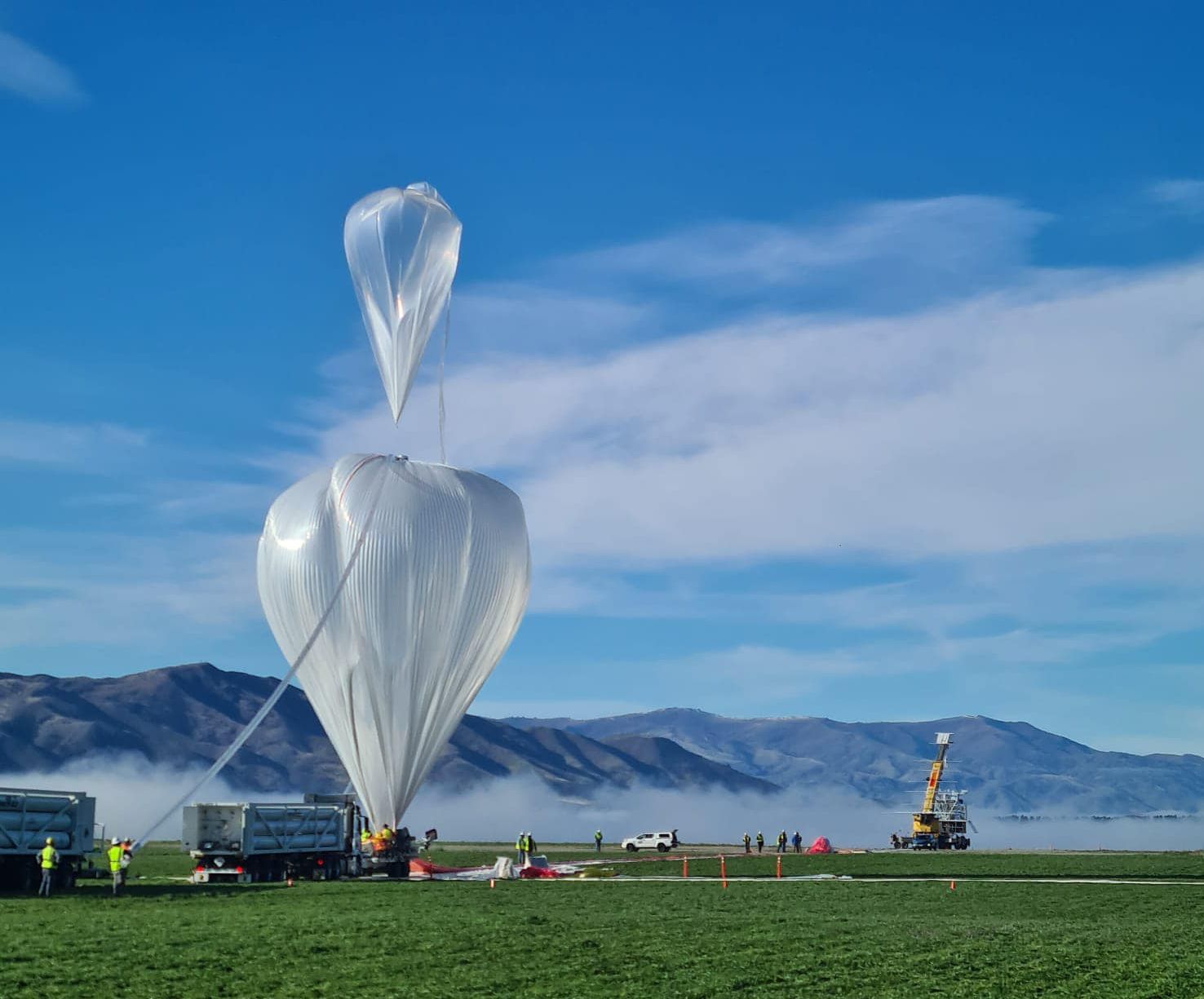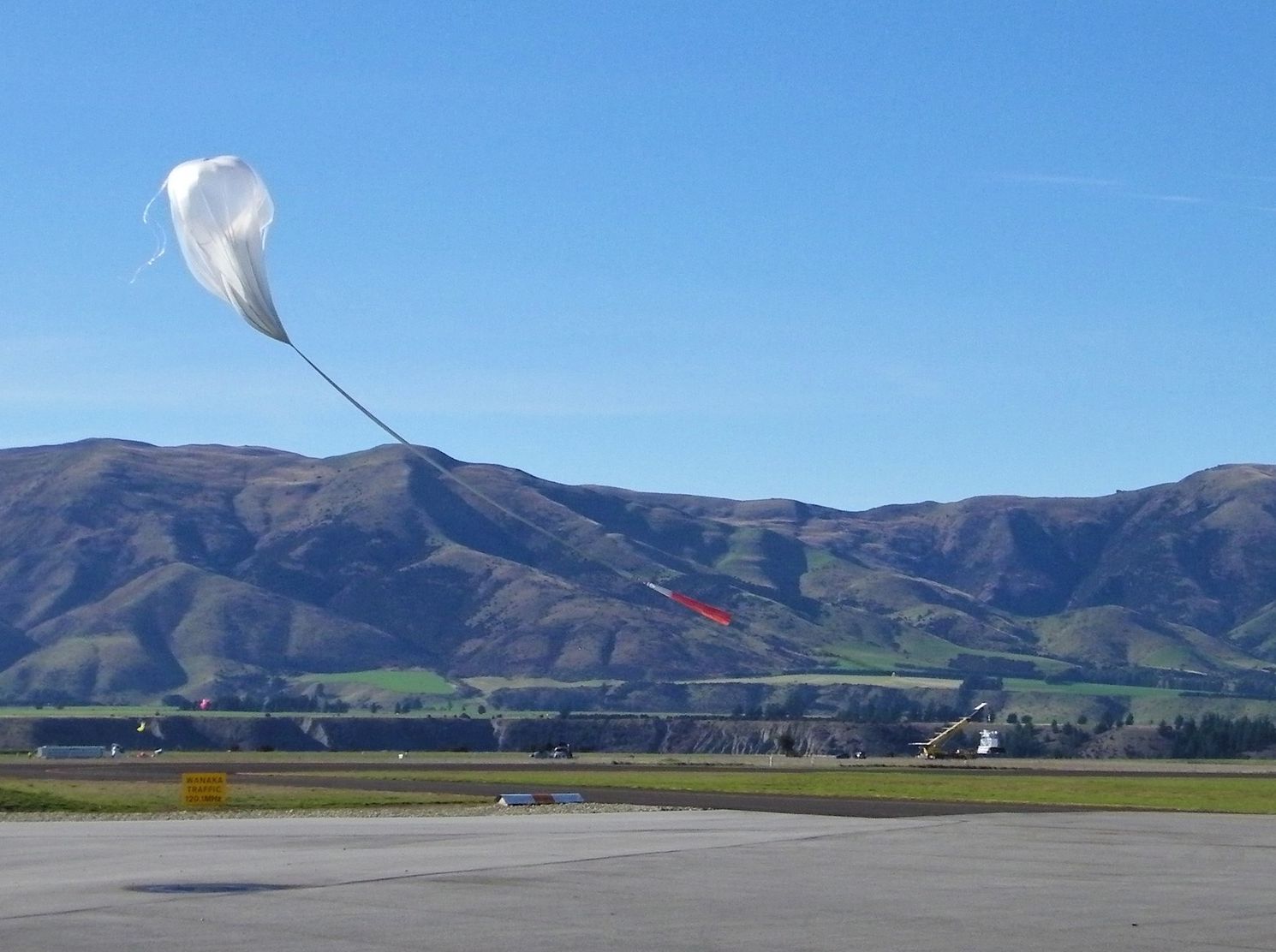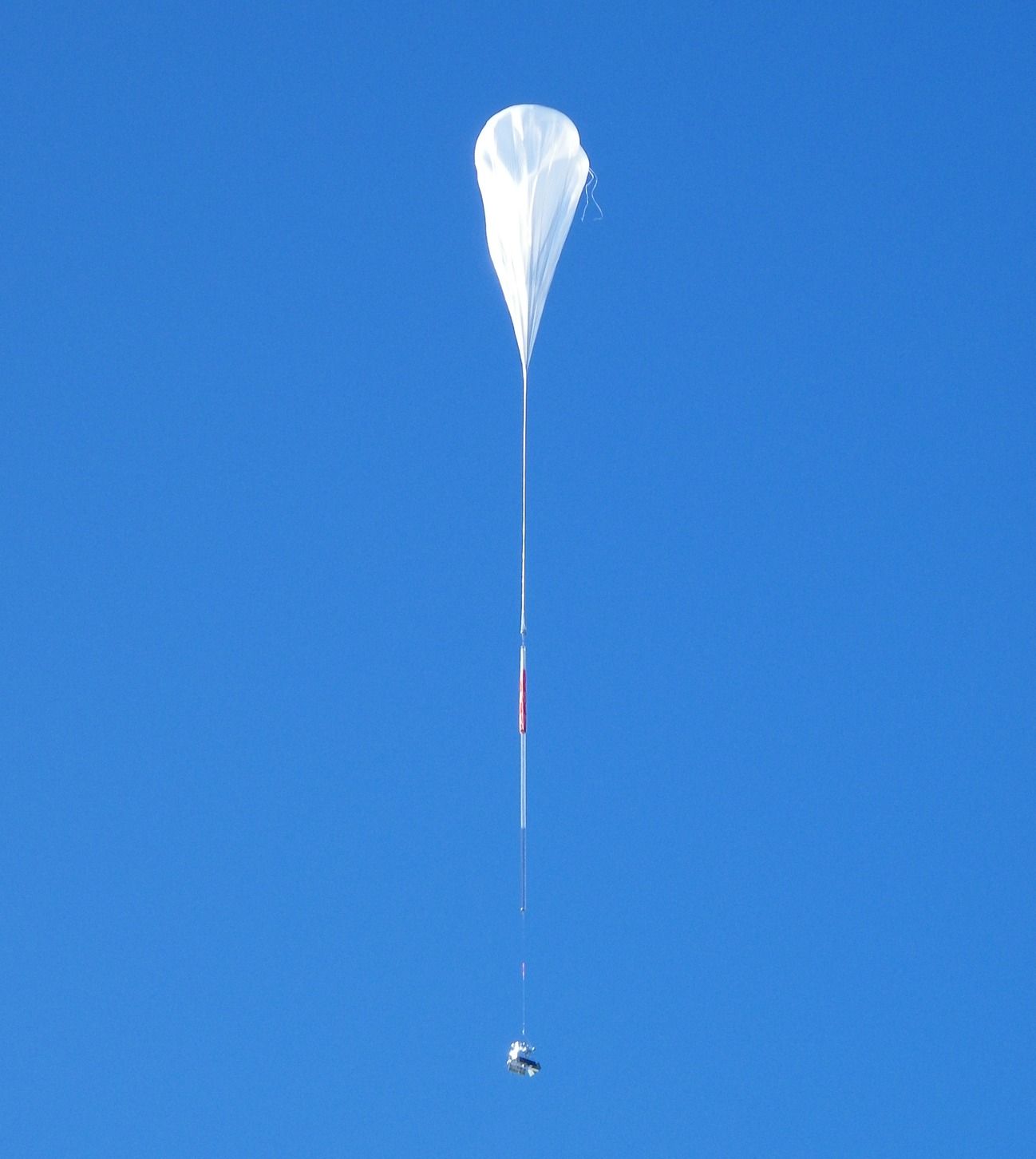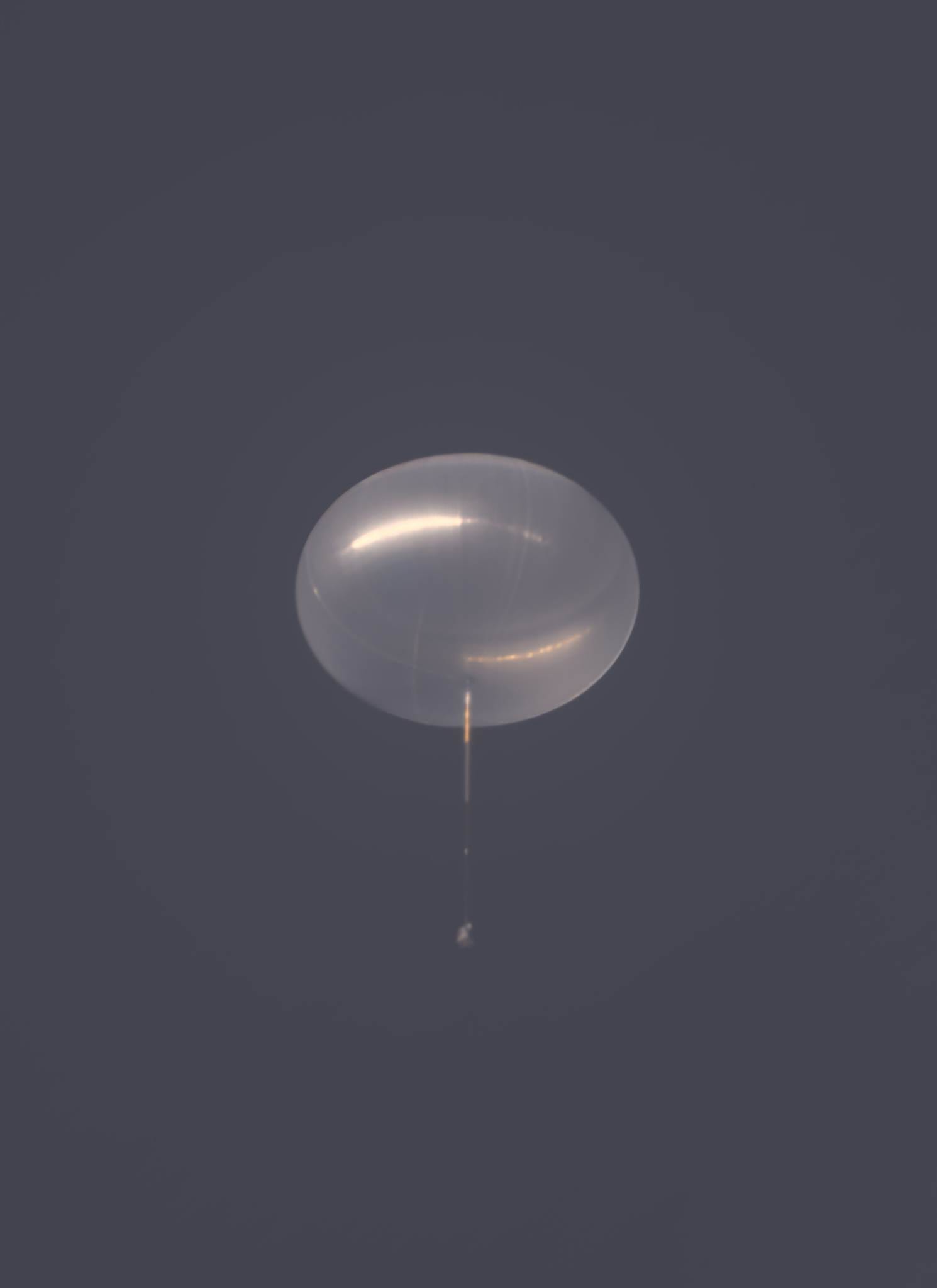Purpose of the flight and payload description
EUSO-SPB2 is the acronym of Extreme Universe Space Observatory on a Super Pressure Balloon 2 a pathfinder mission for future space based mission designed to identify and quantify the various backgrounds relevant for the space-based detection of cosmic rays and neutrinos via the air fluorescence and optical Cherenkov emission channels, and to verify the overall detection strategy. The instrument was developed by a collaboration between the University of Chicago, NASA's Marshall Space Flight Center, Colorado School of Mines, University of Alabama Huntsville, and Lehman College, CUNY and other institutions from other countries of the world. EUSO-SPB2 is the third generation balloon mission undertaken by the JEM-EUSO collaboration which encompasses more than 300 researchers from 84 scientific institutes, space agencies and universities in 16 countries.
To address the science objectives mentioned above, EUSO-SPB2 is comprised of two telescopes: a fluorescence telescope, which points directly downward and is designed for the measurement of cosmic rays, and a Cherenkov telescope, which points near the Earth's limb and is designed for the measurement of Earthskimming neutrinos and direct (above-the-limb) cosmic rays. At left above we can see an scheme of the instrument (click to enlarge).
THE FLUORESCENCE TELESCOPE
The Fluorescence Telescope (FT) inherits from the experience of the previous missions developed by the JEM-EUSO Collaboration: EUSO-TA, EUSO-Balloon, and EUSO-SPB1. It is designed to observe ultraviolet light emitted via fluorescence of Ultra-High Energy Cosmic Rays (UHECRs) induced extensive air showers (EAS). The hearth of the telescope is the Ultraviolet (UV) camera. It is mounted at the convex focal surface where the Schmidt optics focuses the light. It can count single photoelectrons in a wavelength bandwidth between 290 nm and 430 nm with an integration time of 1 micro-second and double pulse resolution of 6 nano-seconds. To avoid damaging the focal plane sensors with direct sunlight, the telescope is equipped with a motorized cover that remains closed during the local day and is opened during the local night hours before the start of data acquisition operations.
The intensity of the light arriving on the telescope is measured by two independent devices. A first device (AMON), placed outside the telescope, is able to measure the absolute intensity of the UV / VIS radiation flow coming from the atmosphere and is also used to discriminate the day / night condition. The second device (EMON) is placed inside the telescope, near the focal surface and measures the intensity of the light arriving on it. It is used to check the dark condition inside the telescope before starting the measurement operations and to check the tightness of the lid closure. A system based on LEDs allows to illuminate the focal surface in a uniform manner to check the operating status of all the pixels of the focal plane sensors.
The Data Processor subsystem allows the remote control of all the sub-systems and manages the procedures for the acquisition and local storage of the data.
The payload also contains an IR camera to monitor for clouds in the field of view of the FT since they have significant impact on the exposure and reconstruction of recorded EAS candidates.
THE CHERENKOV TELESCOPE
The purpose of the Cherenkov telescope is to classify known and unknown sources of backgrounds for future space-based neutrino detectors. It uses the Earth-skimming technique to search for Very-High-Energy (VHE) tau neutrinos below the limb and observe air showers from cosmic rays above the limb. The 0.785 m2 Cherenkov telescope is equipped with a 512-pixel Silicon Photomultipler (SiPM) camera with a spectral range between 400 nm and 800 nm. The camera signals are digitized with a 100 MS/s readout system.
The optical system is a modified Schmidt system with a 1 m diameter aperture providing a vertical field of view of 6.4° and 12.8° in azimuth. The pointing direction can be changed during the flight to any point in azimuth and from 3º above horizontal to ~10º below the Earth's limb (15º below horizontal). The 4 segments of the mirror are aligned in a bi-focal manner, meaning parallel light from outside the instrument is focused into two distinct spots separated by 12 mm. This way, the background rate given by direct hits of charged particles can be reduced as such events produce only one spot in the camera, and coincident direct hits within the 10 ns integration time are rare. EUSO-SPB2 is the first mission equipped with such an instrument as a payload on a stratospheric balloon flight following an initial prototype flown on EUSO-SPB1.
Video showing the launch operations
Details of the balloon flight

Balloon launched on: 5/13/2023 at 00:02 utc
Launch site: Wanaka Airport, Otago, New Zealand
Balloon launched by: Columbia Scientific Balloon Facility (CSBF)
Balloon manufacturer/size/composition: Super Pressure Balloon Aerostar - 18.793.000 cuft
Flight identification number: 729NT
End of flight (L for landing time, W for last contact, otherwise termination time): 5/14/2023 at ~ 13:00 utc
Balloon flight duration (F: time at float only, otherwise total flight time in d:days / h:hours or m:minutes - ): 37 h
Landing site: Sunk in the southern Pacific Ocean, 1000 kilometers SW of Rapa Iti Island, part of the French Polynesia.
The balloon was launched by dynamic method as mission 729NT from the Wanaka Airport, New Zealand a couple of minutes after midnight on May 13, 2023, according to UTC time. The launch was carried out smoothly and without incidents. After a nominal ascent phase the balloon reached an altitude of 108.000 ft and moved east towards the Ocean. On the second night aloft, the balloon started to lose altitude steadily. All the remaining ballast was jettisoned to try to compensate the descent but to no avail, which was a clear indication that the balloon developed a leak.
The descent was very slow and took almost seven hours to hit the Pacific Ocean. During the last hour of descent, the balloon was completely emptied of helium in order to accelerate its final speed. In this way, and following the standard procedures established by NASA, the weight of the payload acts as an anchor that sends both the payload and the balloon to the bottom of the ocean, preventing them from posing a danger to navigation or marine fauna if it remains floating in the upper marine layers.
Impact occurred about 13:00 UTC on May 14, 2023, in a point located 1000 kilometers SW of Rapa Iti a small island that is part of the French Polynesia. Total flight time was about 37 hours.
The two nights the instrument was aloft included one night of taking data in optimal configuration. Thanks to the Starlink satellite system (that was used for the first time during this year's campaign) the team was able to obtain and download data until the last minute of flight. The data includes about 50.000 "events" triggered by the fluorescence telescope, and still other data taken by the Cherenkov telescope. According to the best estimates of the scientific team, there is some chance that among those events, may have recorded a shower of cosmic rays, which would be the first ever detected from above, using the fluorescence technique.
External references
- Analysis of above-the-limb Cosmic Rays for EUSO-SPB2 Instrumentation and Methods for Astrophysics (astro-ph.IM)
- Commissioning, Calibration, and Performance of the Cherenkov Telescope on EUSO-SPB2 Proceedings of Science for the 38th International Cosmic Ray Conference
- EUSO-SPB2 JEM-EUSO Collaboration website
- EUSO-SPB2 website at JEM-EUSO Program, University of Rome, Italy
- EUSO-SPB2 website at Lehman College
- EUSO-SPB2 website at University of Iowa
- Overview and First Results of EUSO-SPB2 Proceedings 38th ICRC 2023 Nagoya, Japan
- Overview of Cherenkov Telescope on-board EUSO-SPB2 for the Detection of Very-High-Energy Neutrinos Instrumentation and Methods for Astrophysics - ICRC 2021
- Overview of the EUSO-SPB2 Target of Opportunity program using the Cherenkov Telescope Proceedings of Science for the 38th International Cosmic Ray Conference
- Simulating Geomagnetic Effects on Muons in Extensive Air Showers for the EUSO-SPB2 Mission Proceedings of Science for the 38th International Cosmic Ray Conference
- Technology of the Super Pressure Balloon NASA's Balloon Program Office website
- Tests and characterisation of the KI trigger for fast events on the EUSO-SPB2 Fluorescence Telescope Instrumentation and Methods for Astrophysics (astro-ph.IM)
- The Data Processor of the SPB2 Fluorescence Telescope: in flight performance Instrumentation and Methods for Astrophysics (astro-ph.IM)
- The EUSO-SPB2 Cherenkov Telescope - Flight Performance and Preliminary Results Proceedings 38th ICRC 2023 Nagoya, Japan
- The Fluorescence Telescope on board EUSO-SPB2 for the detection of Ultra High Energy Cosmic Rays Instrumentation and Methods for Astrophysics - ICRC 2021
- Two for Two! NASA Launches 2nd Super Pressure Balloon from New Zealand NASA blog
16263If you consider this website interesting or useful, you can help me to keep it up and running with a small donation to cover the operational costs. Just the equivalent of the price of a cup of coffee helps a lot.

